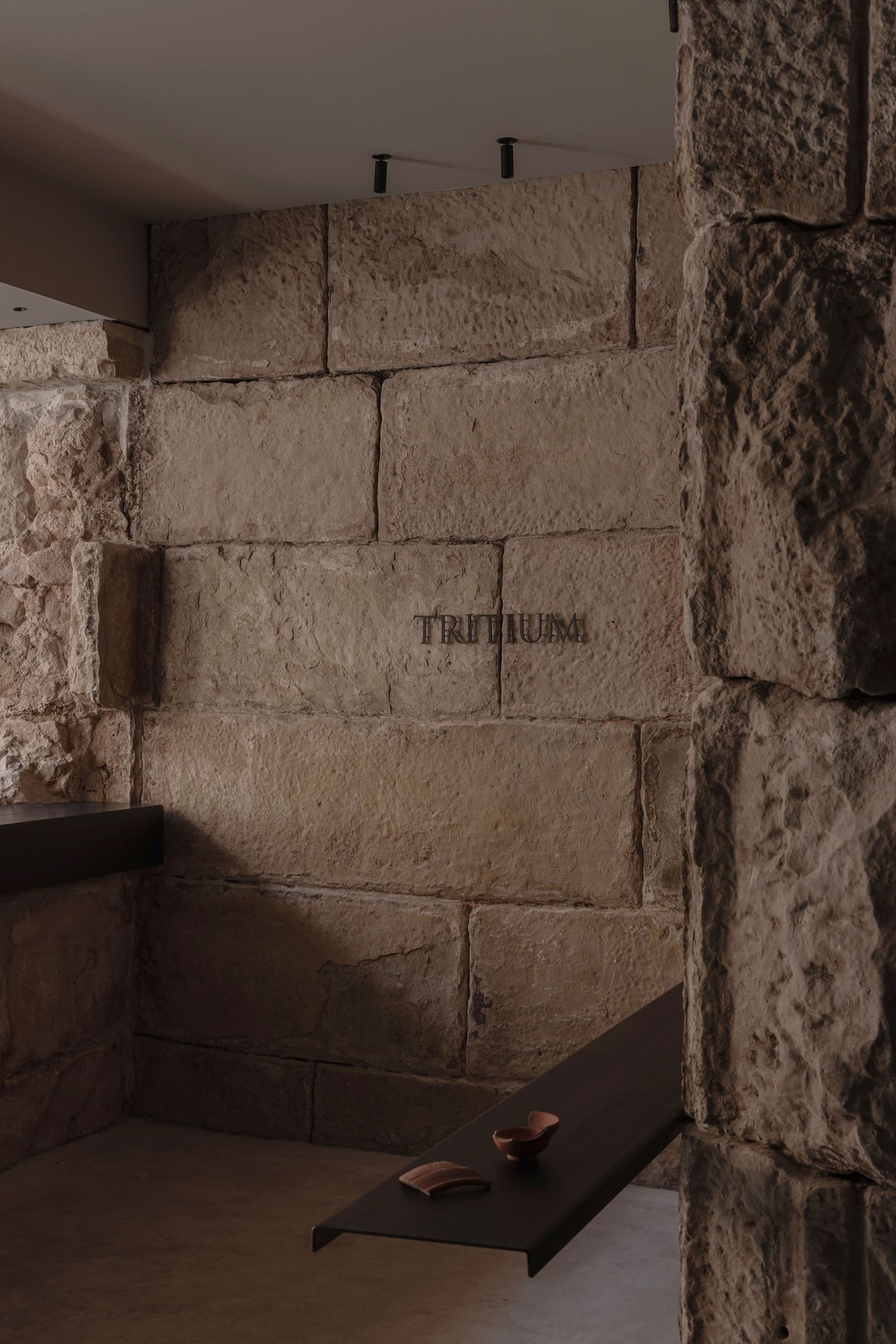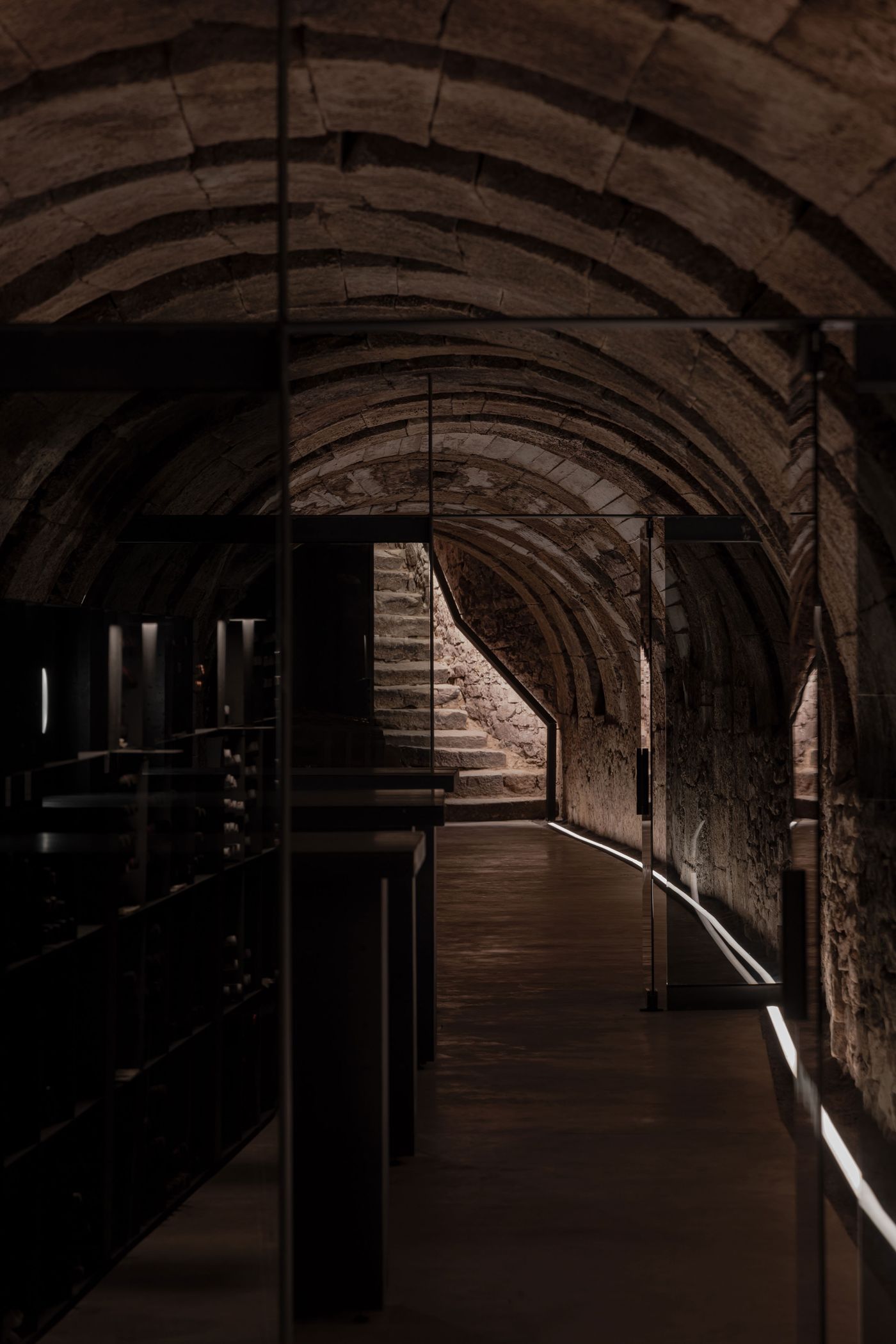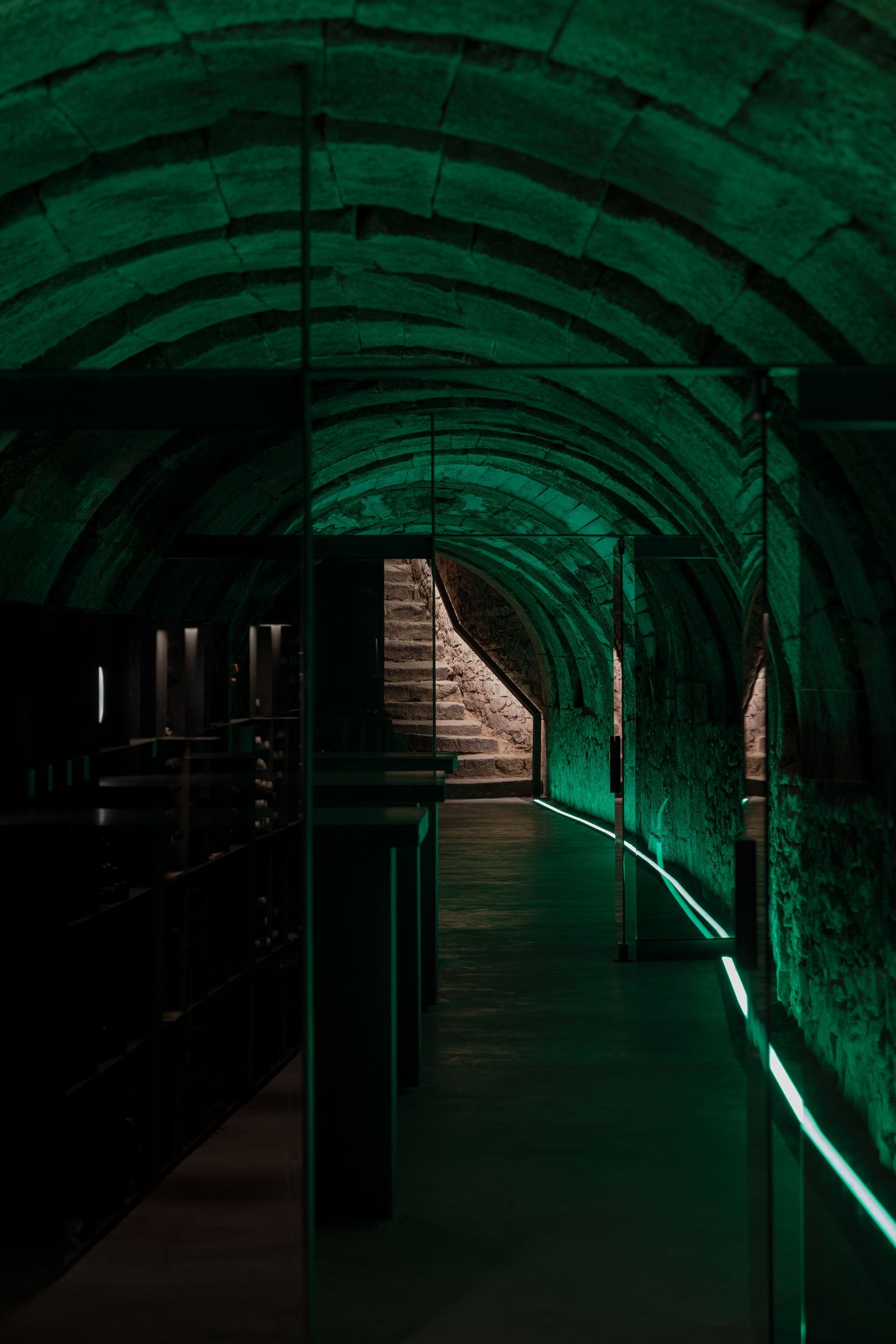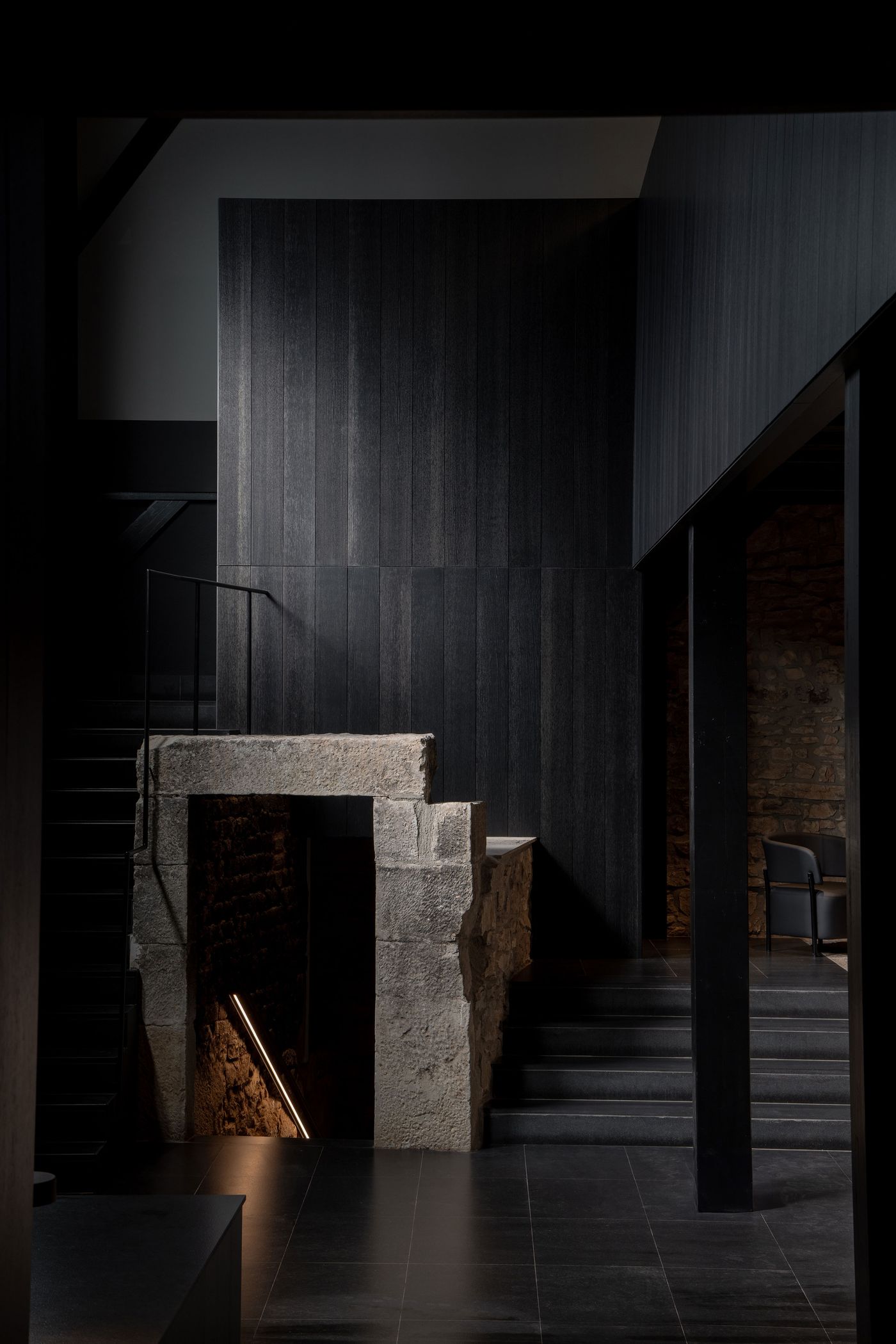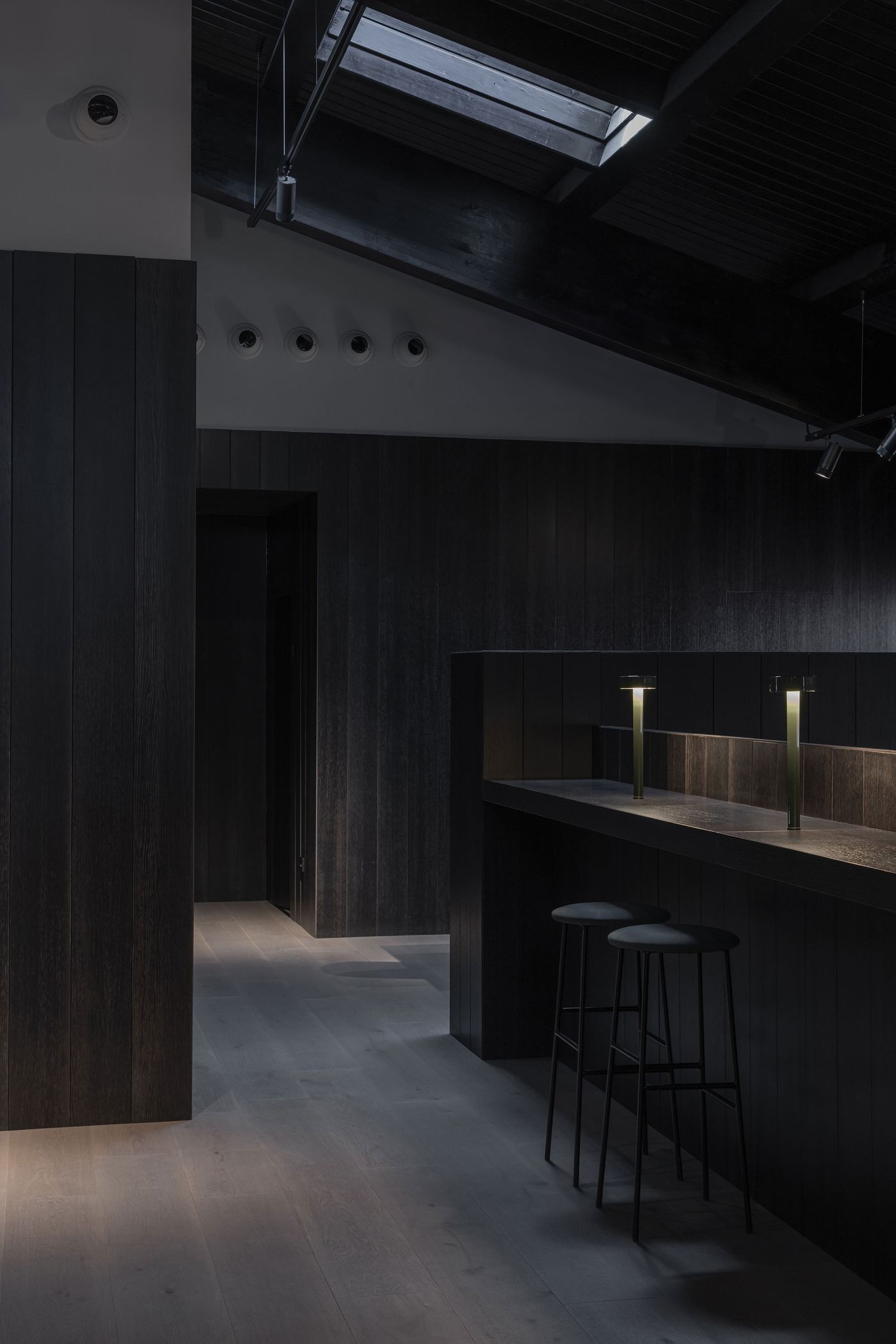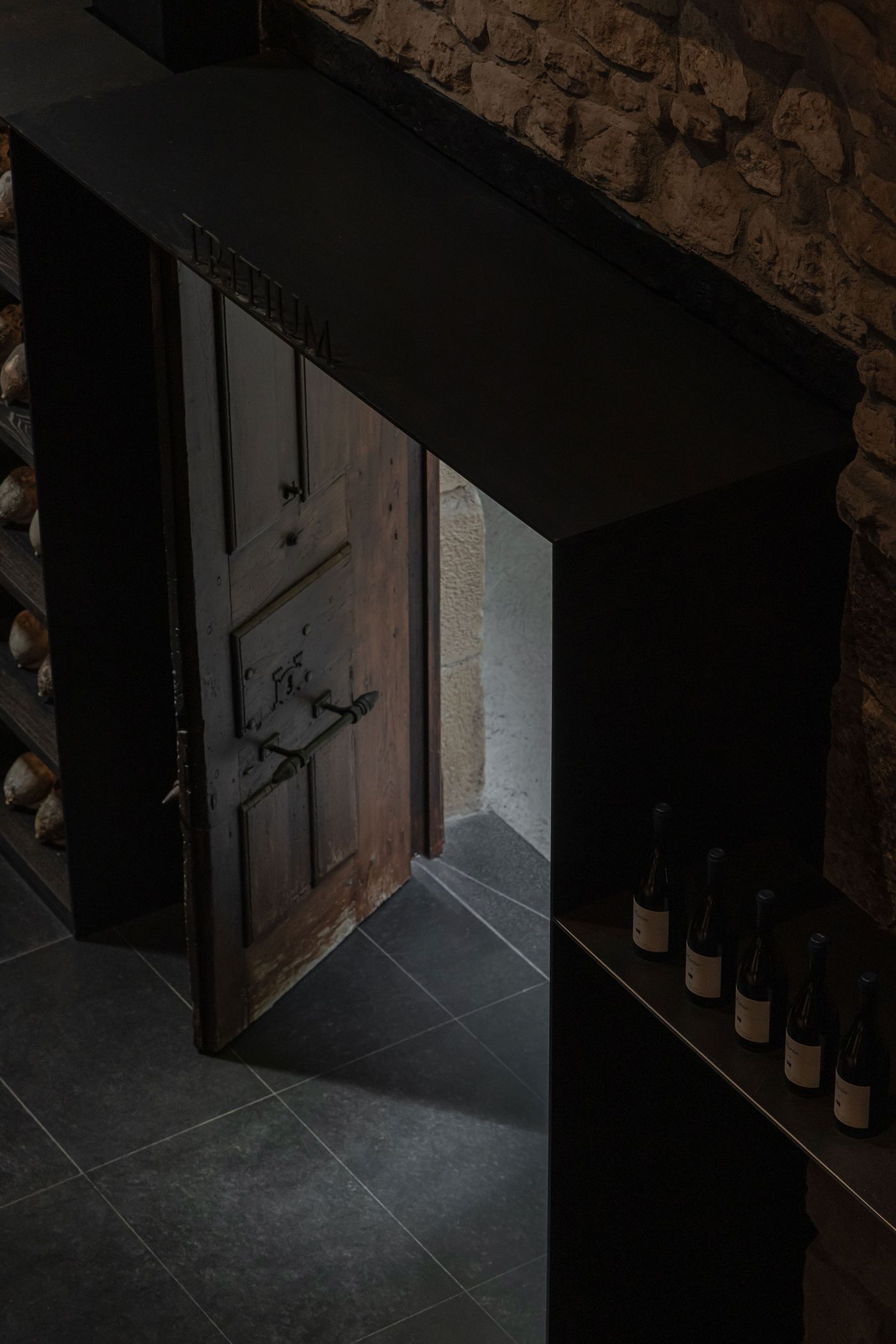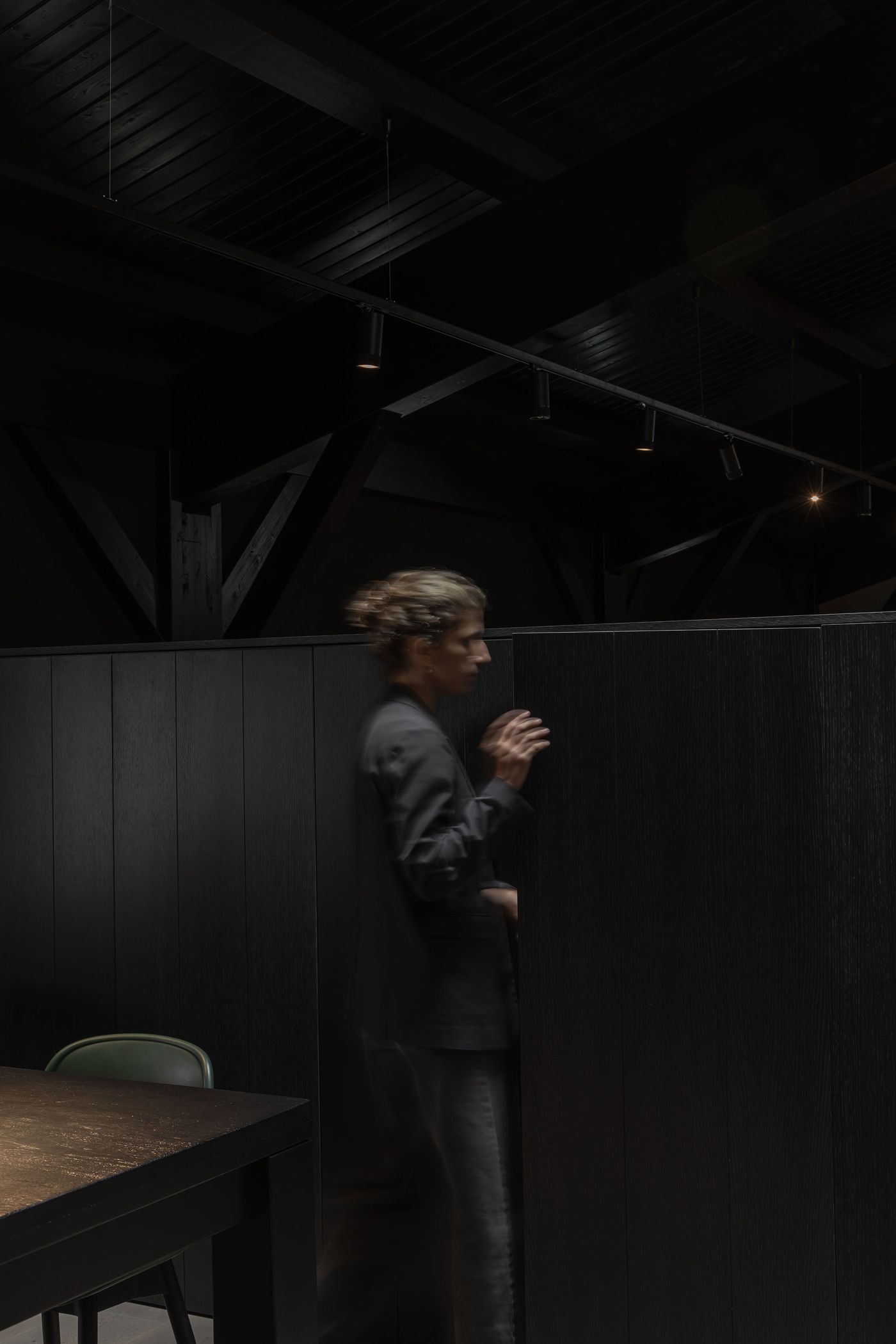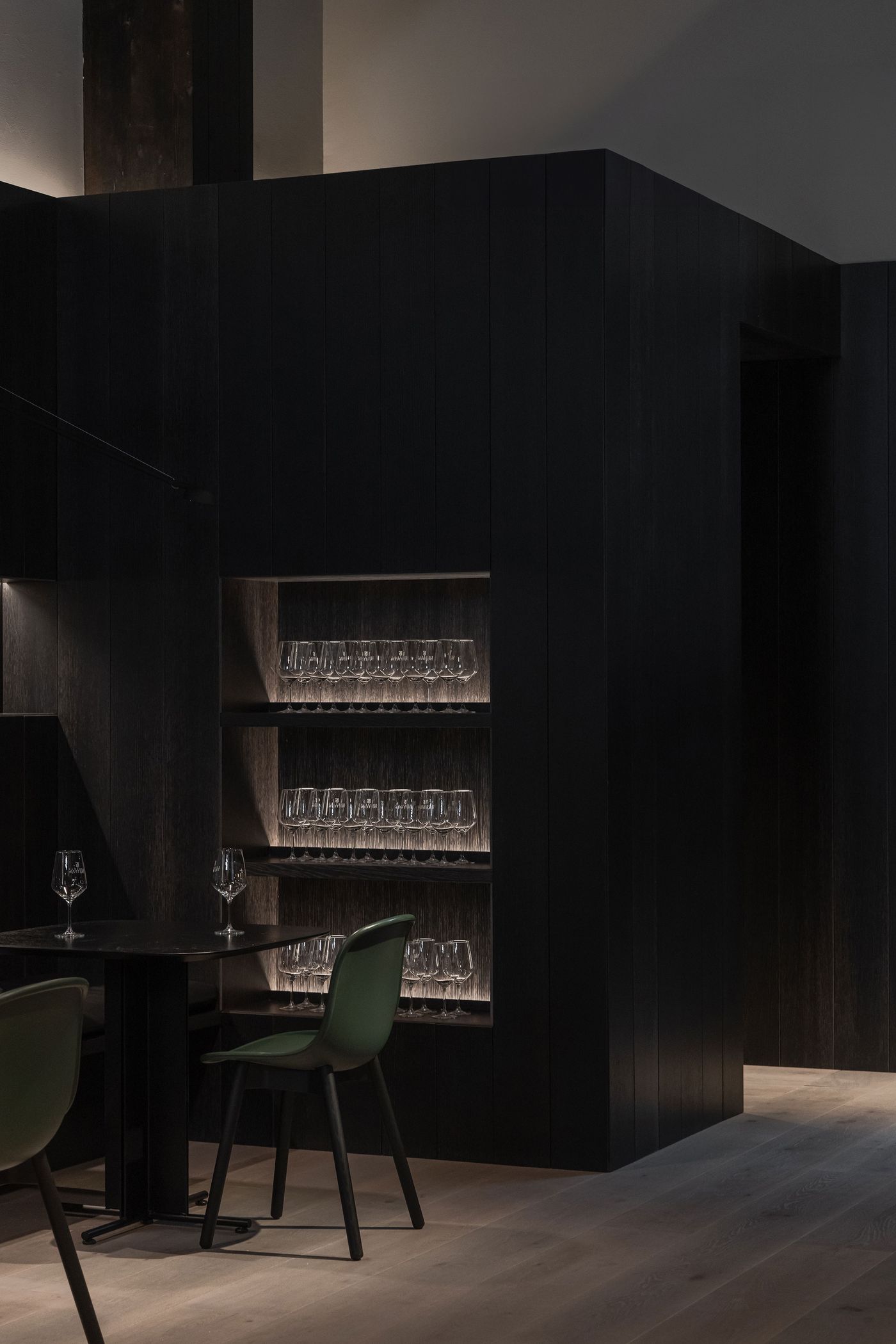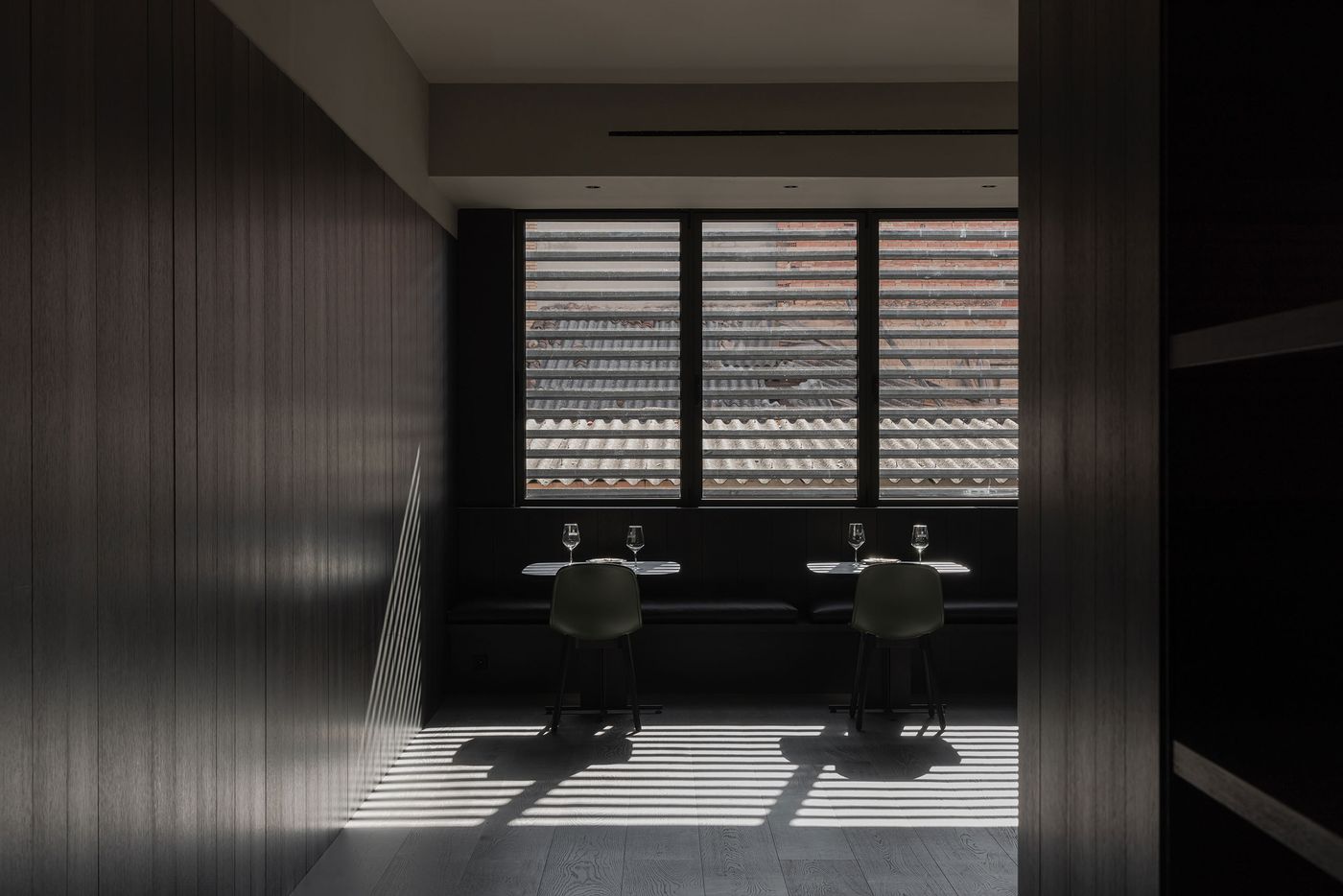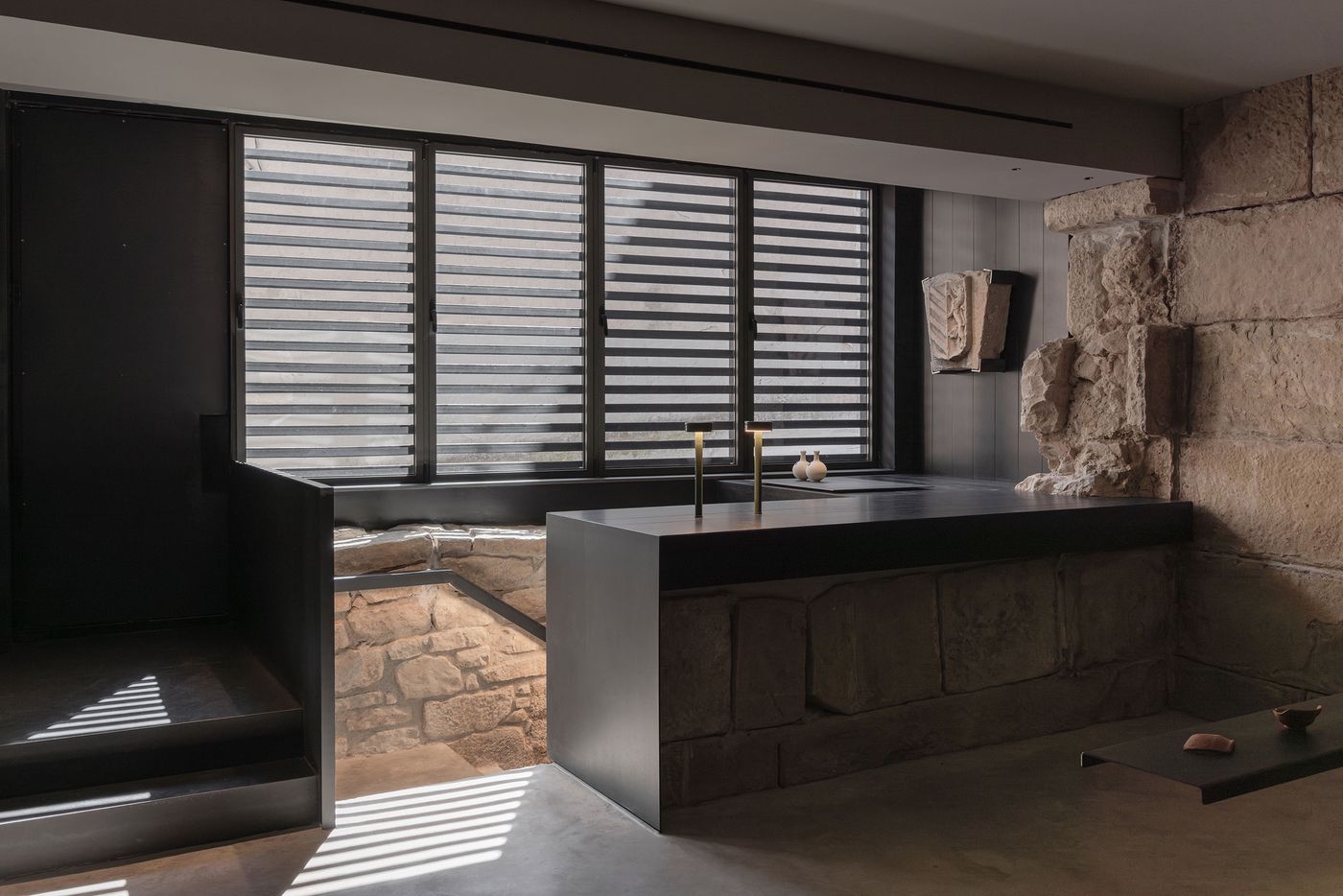
Tritium Winery by Francesc Rifé Studio: A Measured Balance of Heritage and Modernity
Words by Eric David
Location
Cenicero, Spain
Tritium Winery by Francesc Rifé Studio: A Measured Balance of Heritage and Modernity
Words by Eric David
Cenicero, Spain
Cenicero, Spain
Location
Wineries tend to fall in two camps design-wise where: older properties in most cases celebrate their vernacular heritage while new or renovated facilities tend to showcase their contemporary sophistication. Tritium Winery in Cenicero, a charming town in Spain’s La Rioja wine region, upends these paradigms by boldly fusing tradition and modernity. Designed by Barcelona-based Francesc Rifé Studio, the project involved restoring a 15th-century building and introducing a new volume that complements the historic structure rather than overshadowing it. Starkly minimalist in aesthetic, the winery is nevertheless imbued with a timeless sensibility thanks to a sombre palette of charred pine, black steel, and stained oak that thoughtfully harmonizes with the original stone construction.
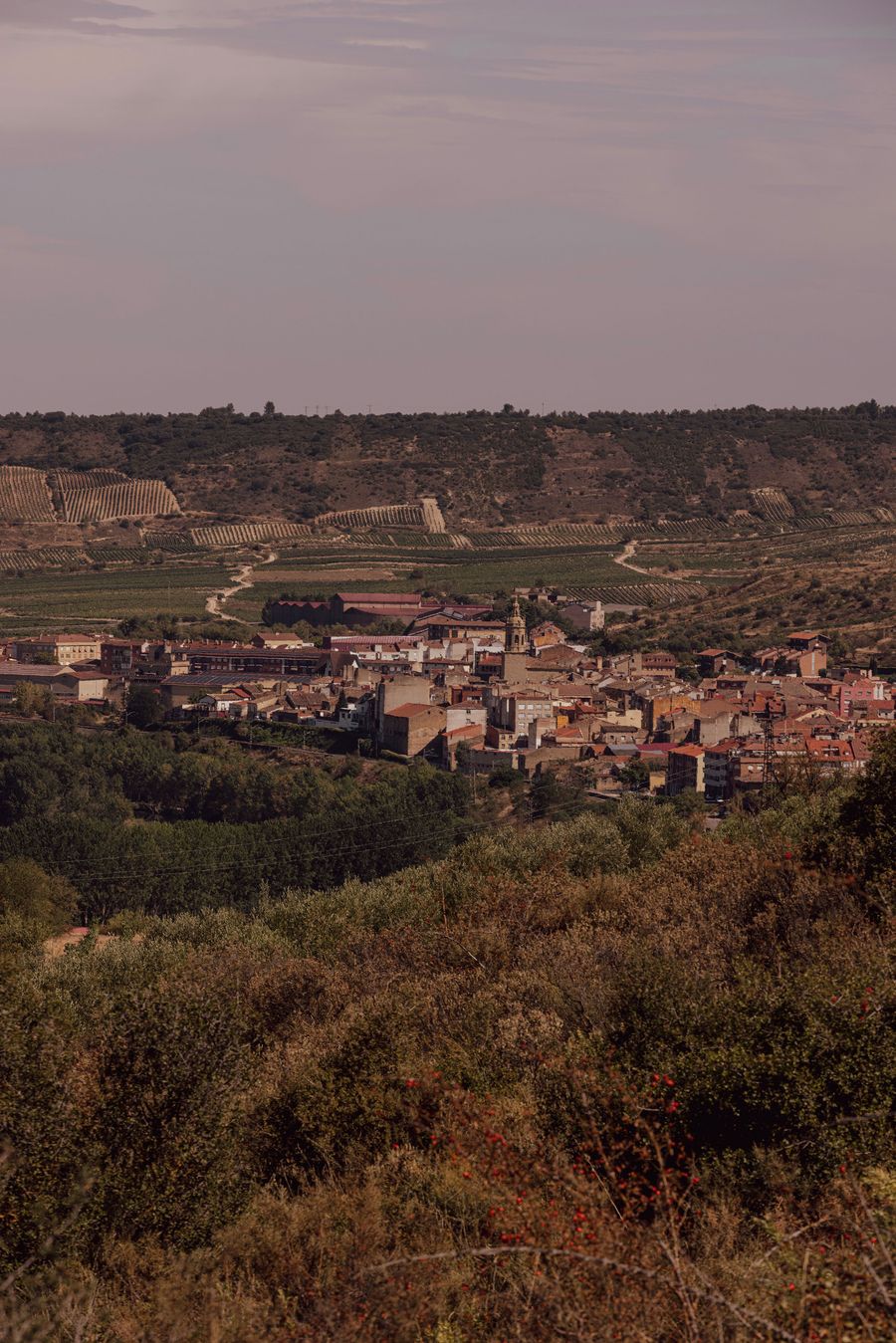
Photography by Javier Márquez.
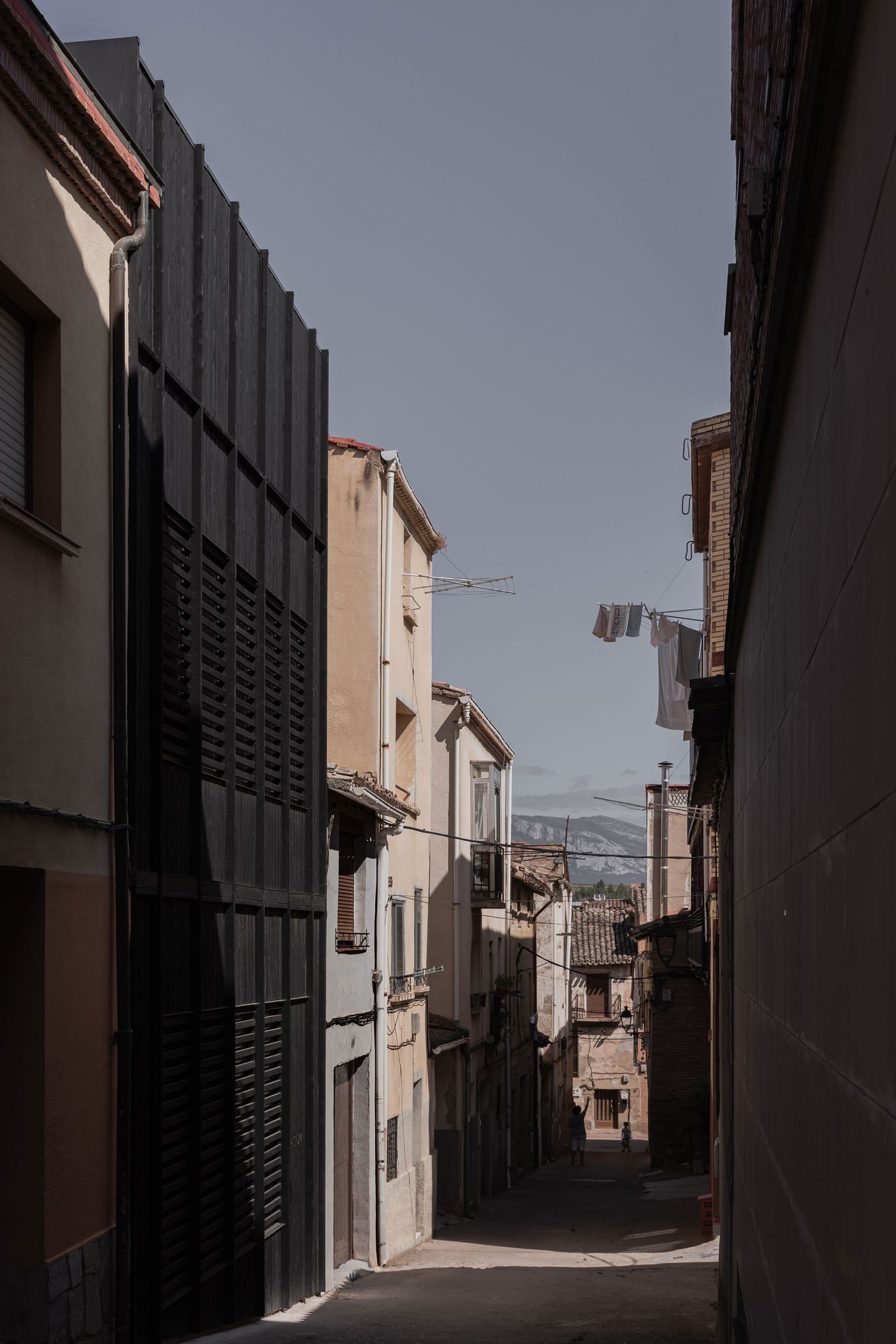
Photography by Javier Márquez.
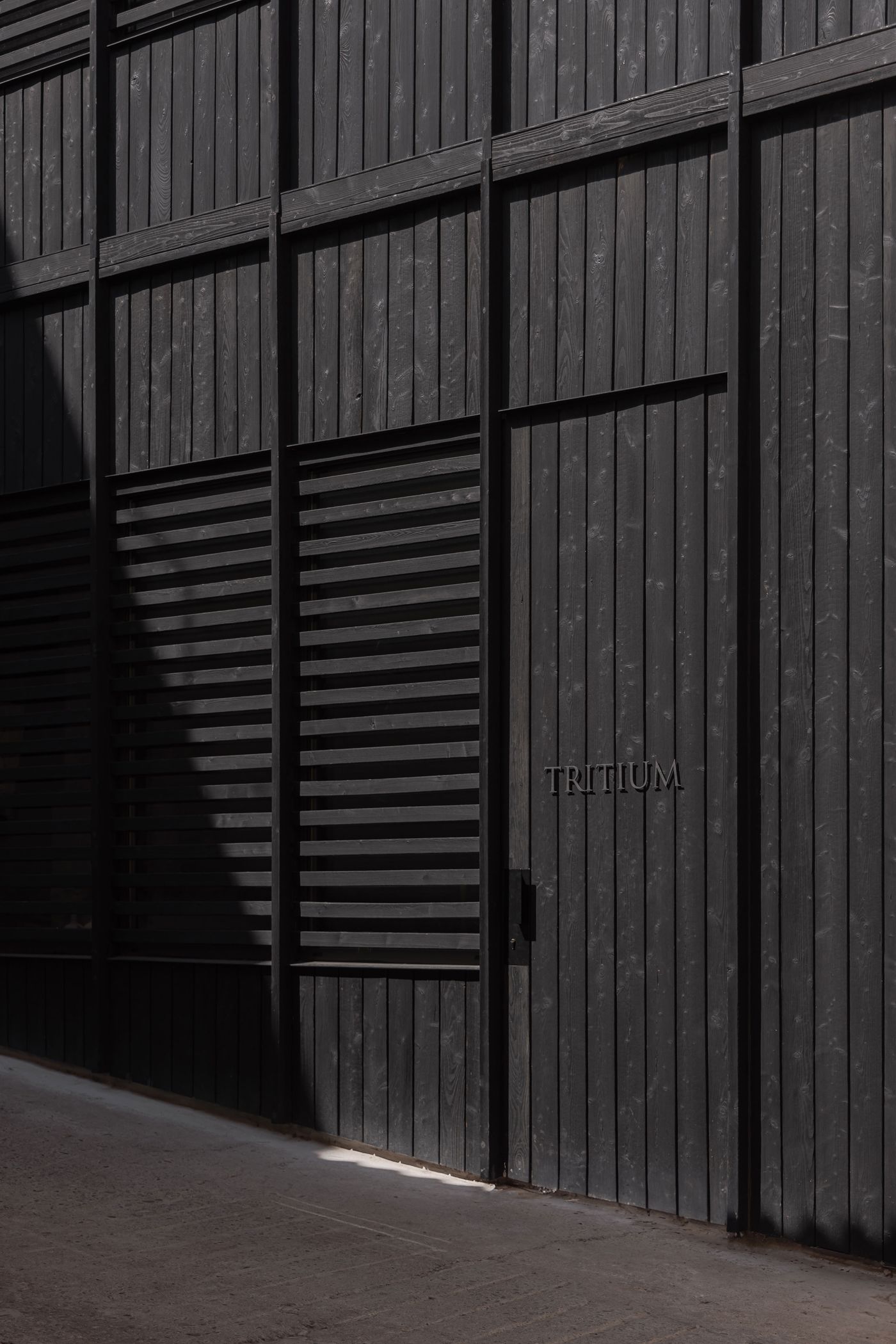
Photography by Javier Márquez.

Photography by Javier Márquez.

Photography by Javier Márquez.
Accessed through a narrow alley, the building’s charred timber façade boldly stands out against the earthen-hued buildings that surround it. Designed as a nod to traditional wine barrels, the façade sets the tone for the interior’s dark, textural palette. Stepping inside, a compact reception area juxtaposes original masonry with sleek charred wood surfaces and custom black steel furnishings, establishing a tactile dialogue between old and new.
From here, a staircase leads down to the original 15th-century underground cellar. Stretching 36 metres in length, the vaulted space is divided into three zones for barrel storage, tastings, and a wine archive, subtly delineated by smoked grey glass doors framed in black metal. The design is intentionally restrained, with strategically placed lighting drawing attention to the architectural features while supporting the immersive quality of the space.
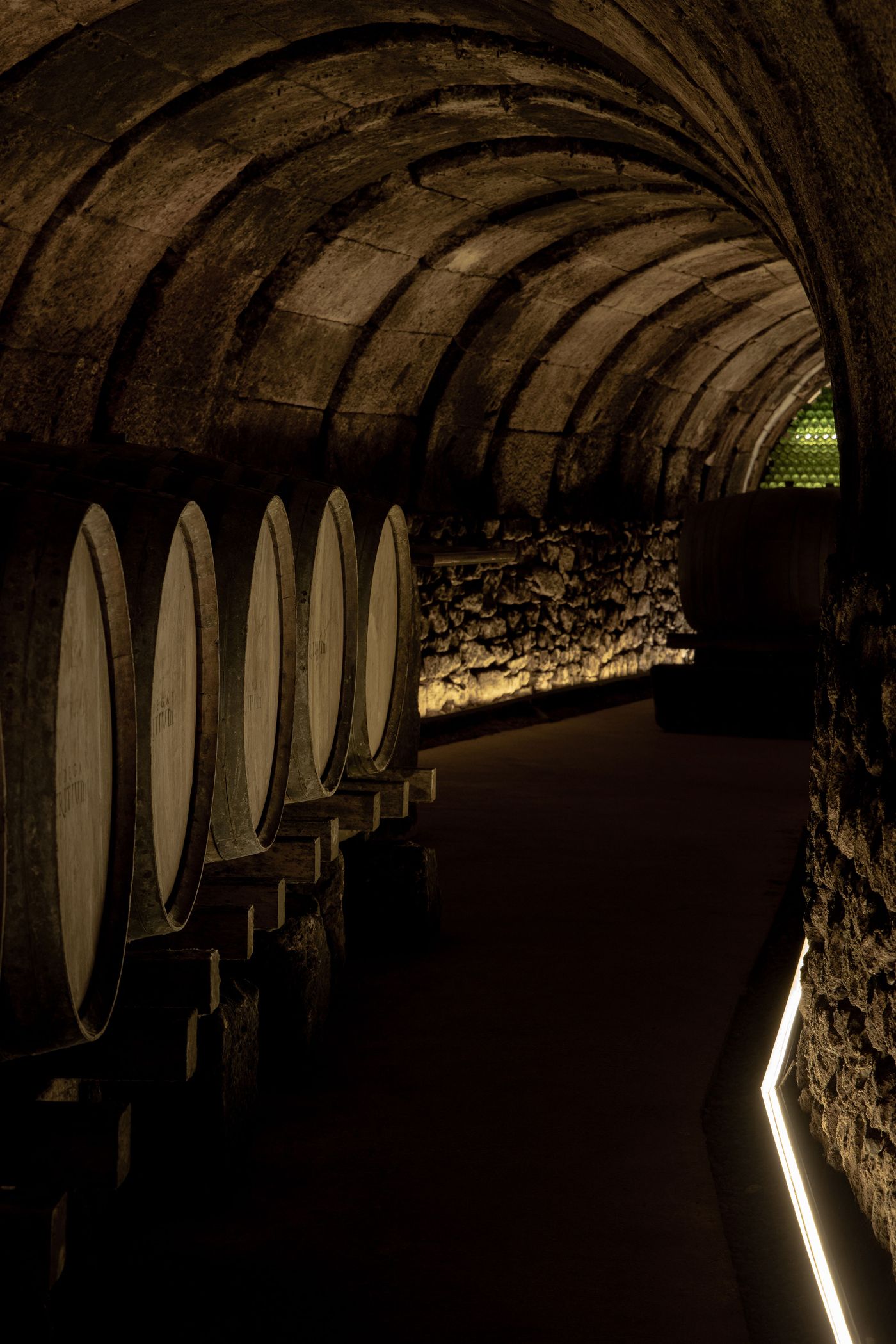
Photography by Javier Márquez.
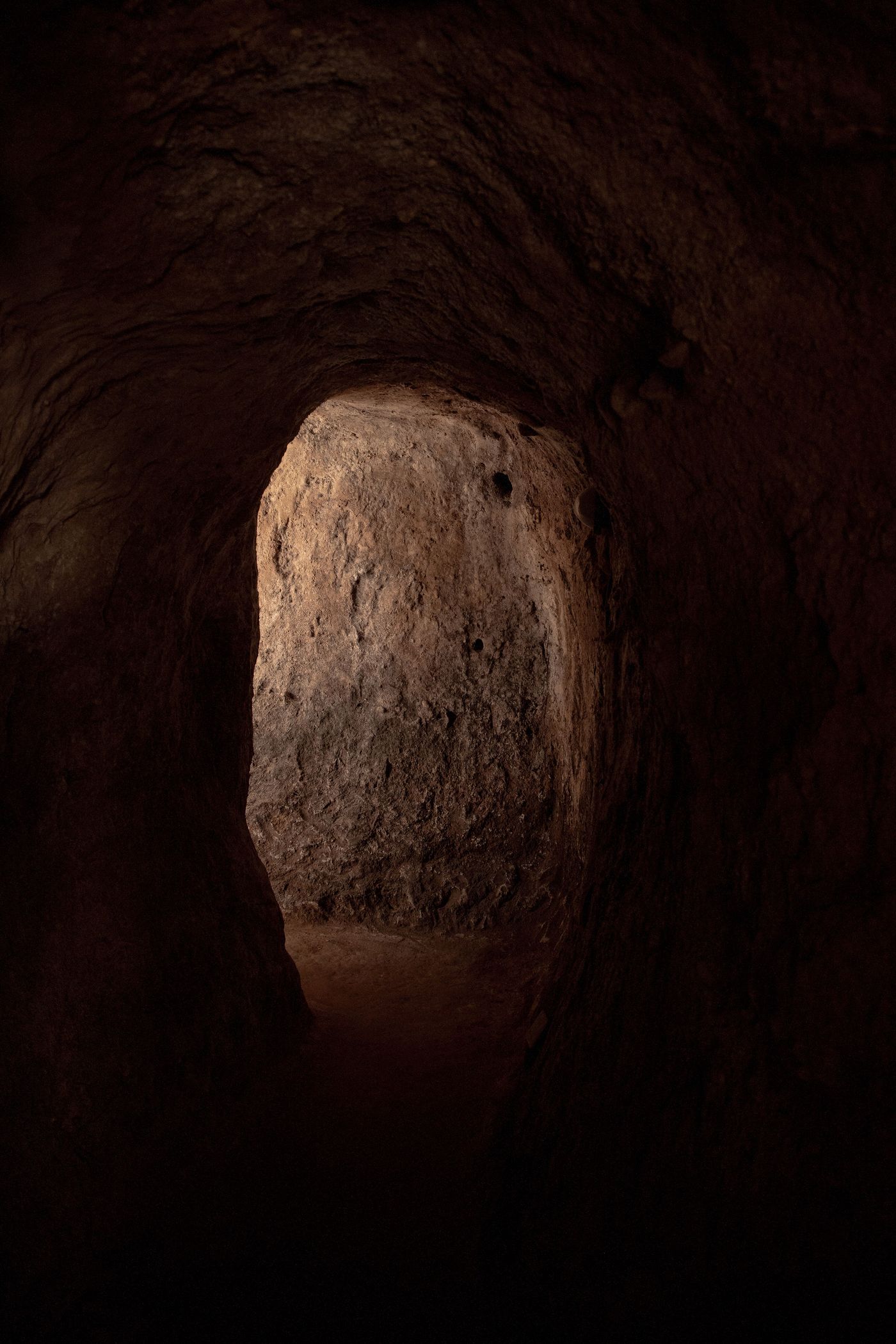
Photography by Javier Márquez.

Photography by Javier Márquez.
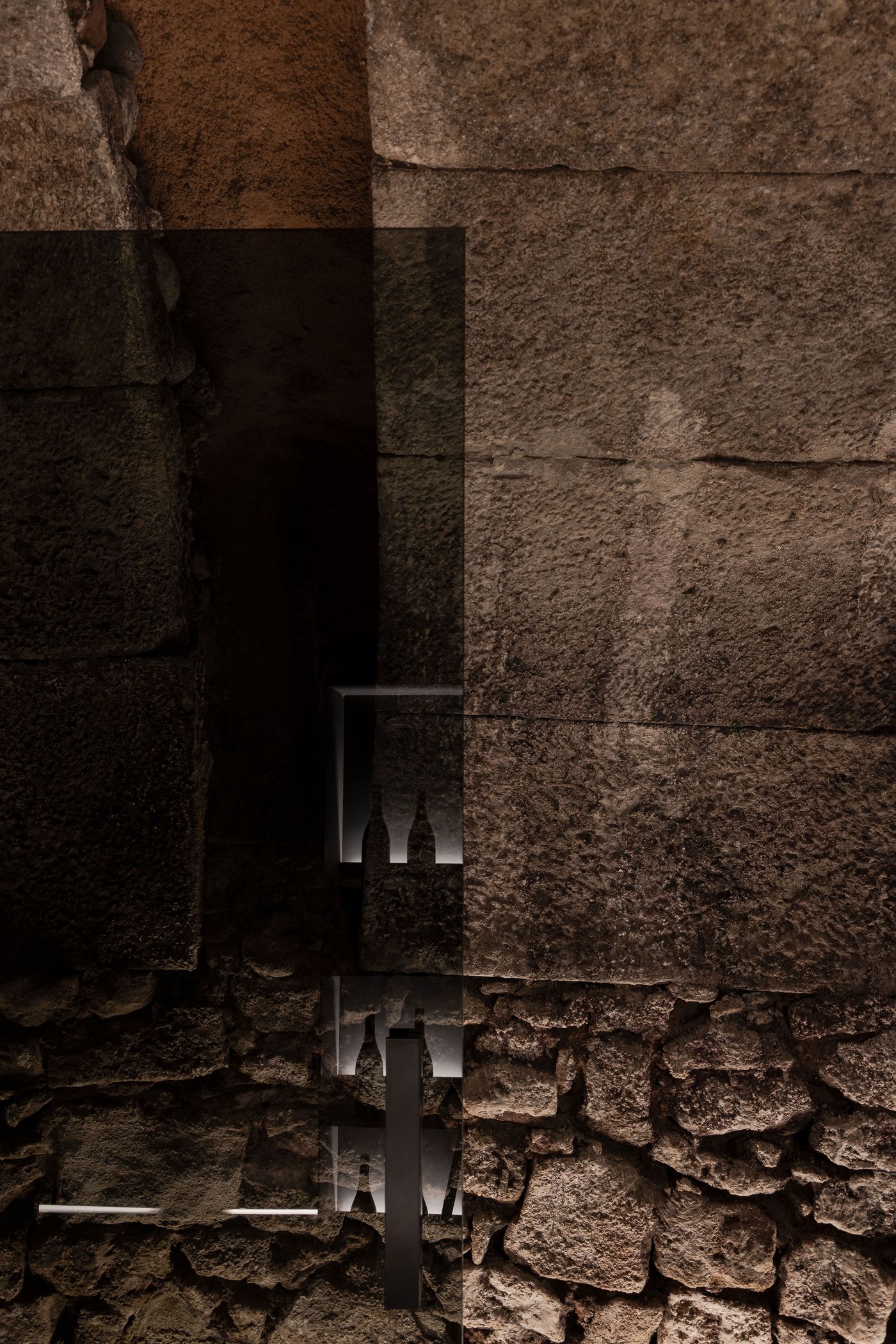
Photography by Javier Márquez.
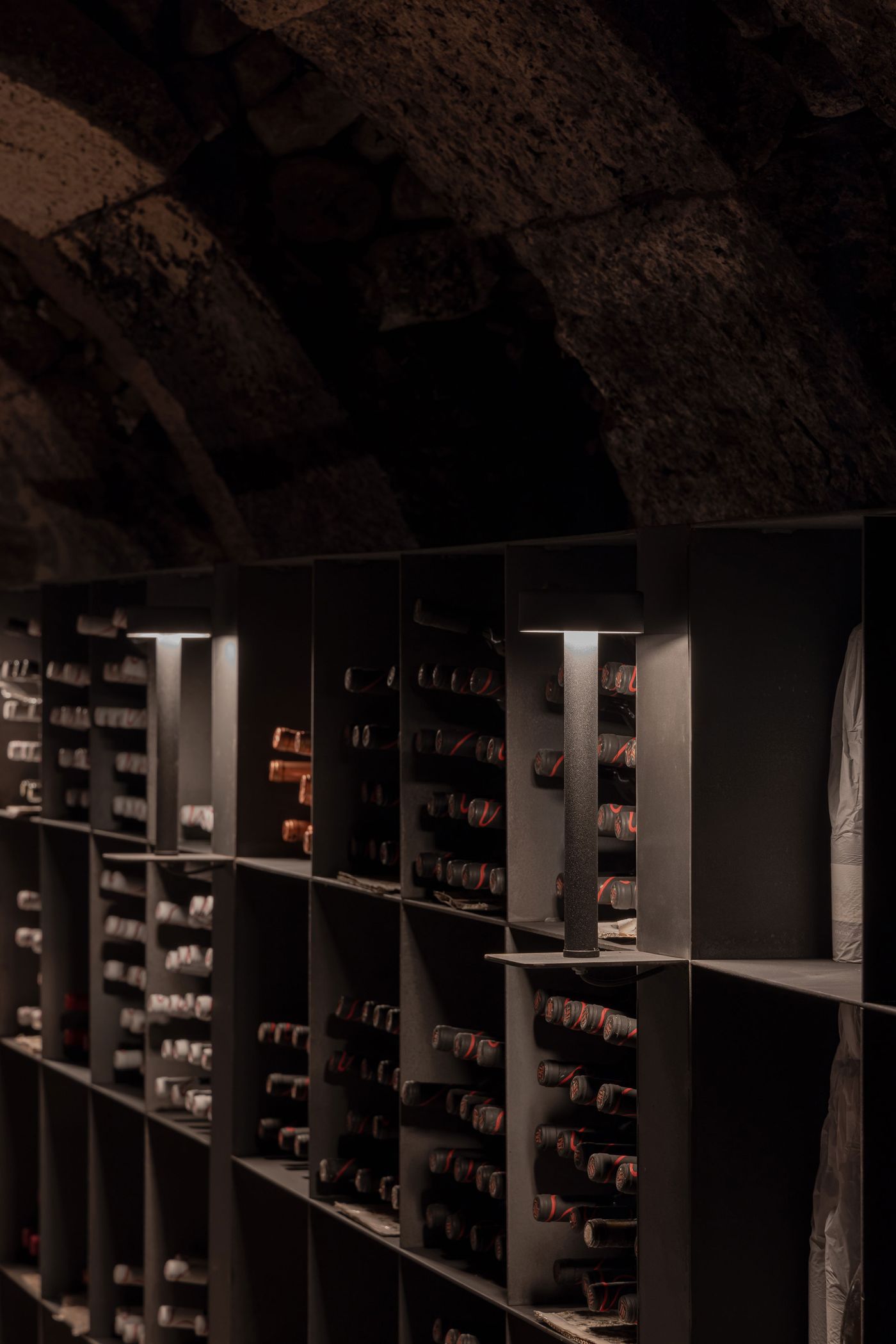
Photography by Javier Márquez.

Photography by Javier Márquez.
Back above ground, a transitional corridor offers a glimpse into the winery’s production area. Pressed grape tanks made of steel, concrete, and ceramics are partially obscured behind a screen of spaced wooden slats, offering a controlled view of the winemaking process; a thoughtful gesture that acknowledges the industrial reality behind the wine, without overwhelming the visitor.
The corridor opens dramatically into a double-height hall, the spatial and symbolic heart of the renovation. Serving as both a sales area and an orientation point, the space is flooded with natural light from skylights and clerestory windows, its verticality providing a striking contrast to the almost compressed atmosphere in the cellar below. Like the reception area, sections of the original stone walls are left exposed, emphasizing the tension and harmony between old and new materials.

Photography by Javier Márquez.
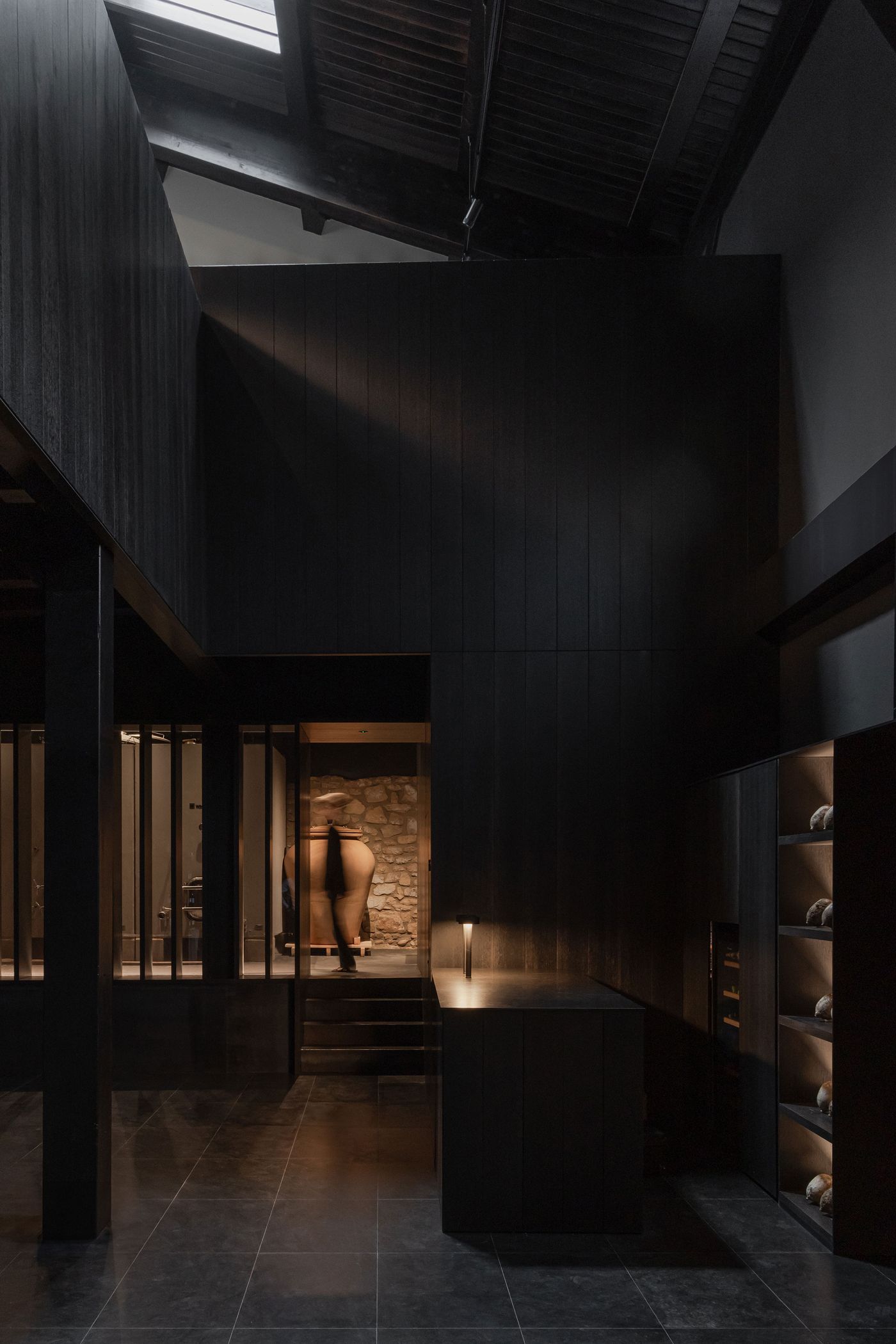
Photography by Javier Márquez.
A wood-clad staircase leads up to the mezzanine level, where a multipurpose space accommodates tastings, private dinners, and events. While continuing the same pared-back material language, the room is enlivened by the pitched ceiling and discreet pops of colour with pine green chairs, stools, and desk lamps punctuating the otherwise muted scheme.
Visitors exit through the sales area on the ground floor, completing a loop that has been carefully designed for both flow and functionality. The renovation does more than improve circulation though; it redefines the experience of visiting a winery by creating distinct yet interconnected zones tailored to the different stages of engagement.
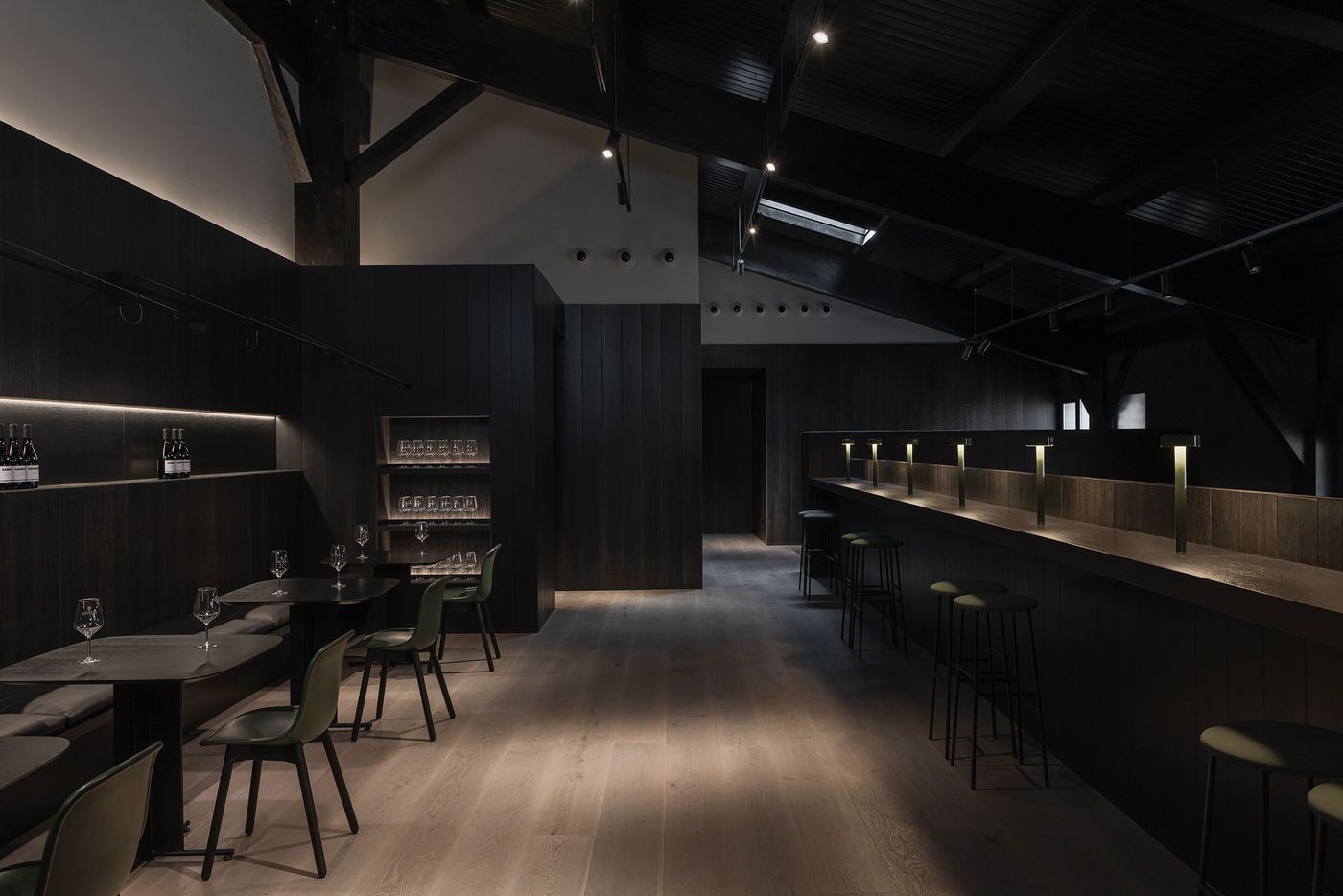
Photography by Javier Márquez.
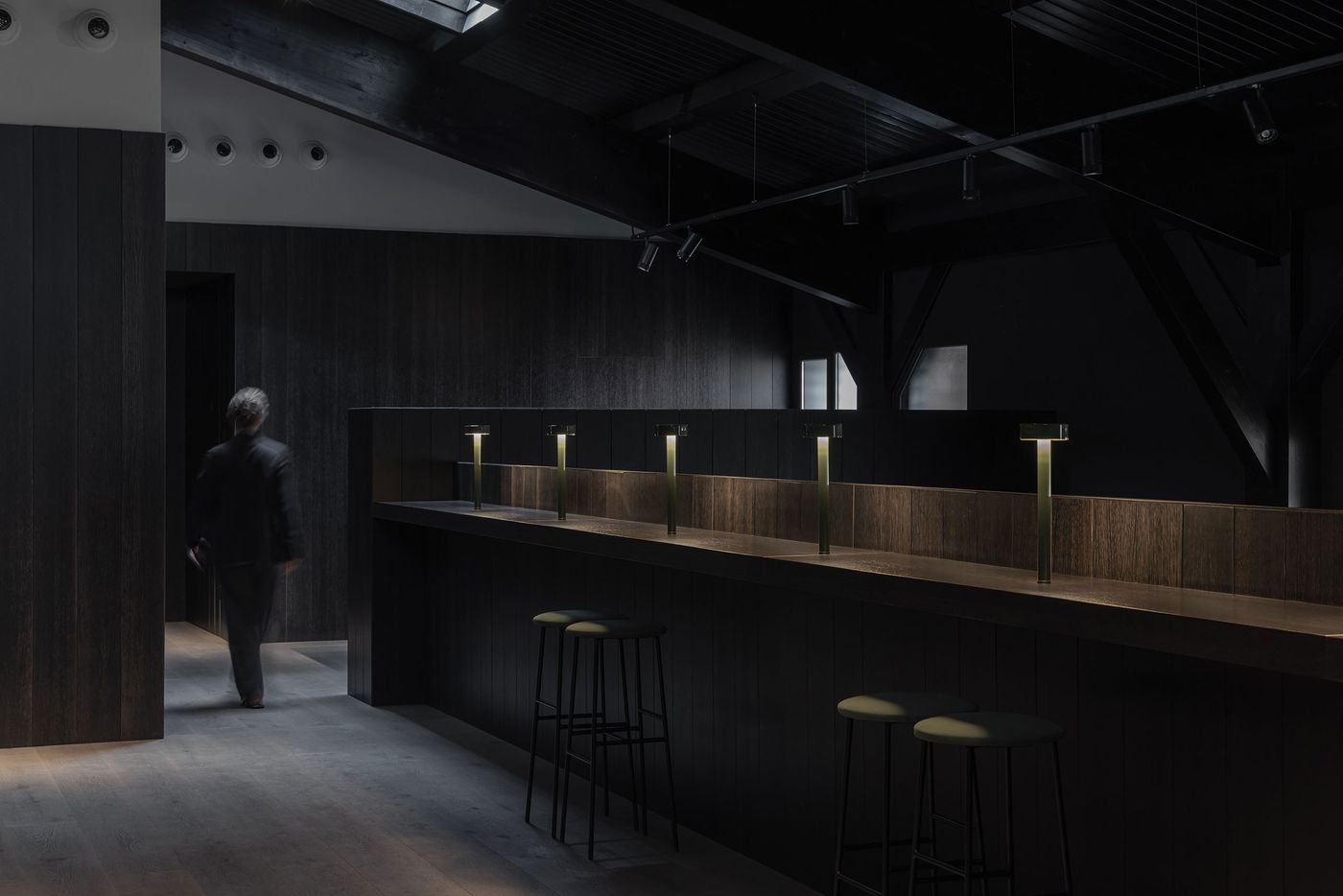
Photography by Javier Márquez.
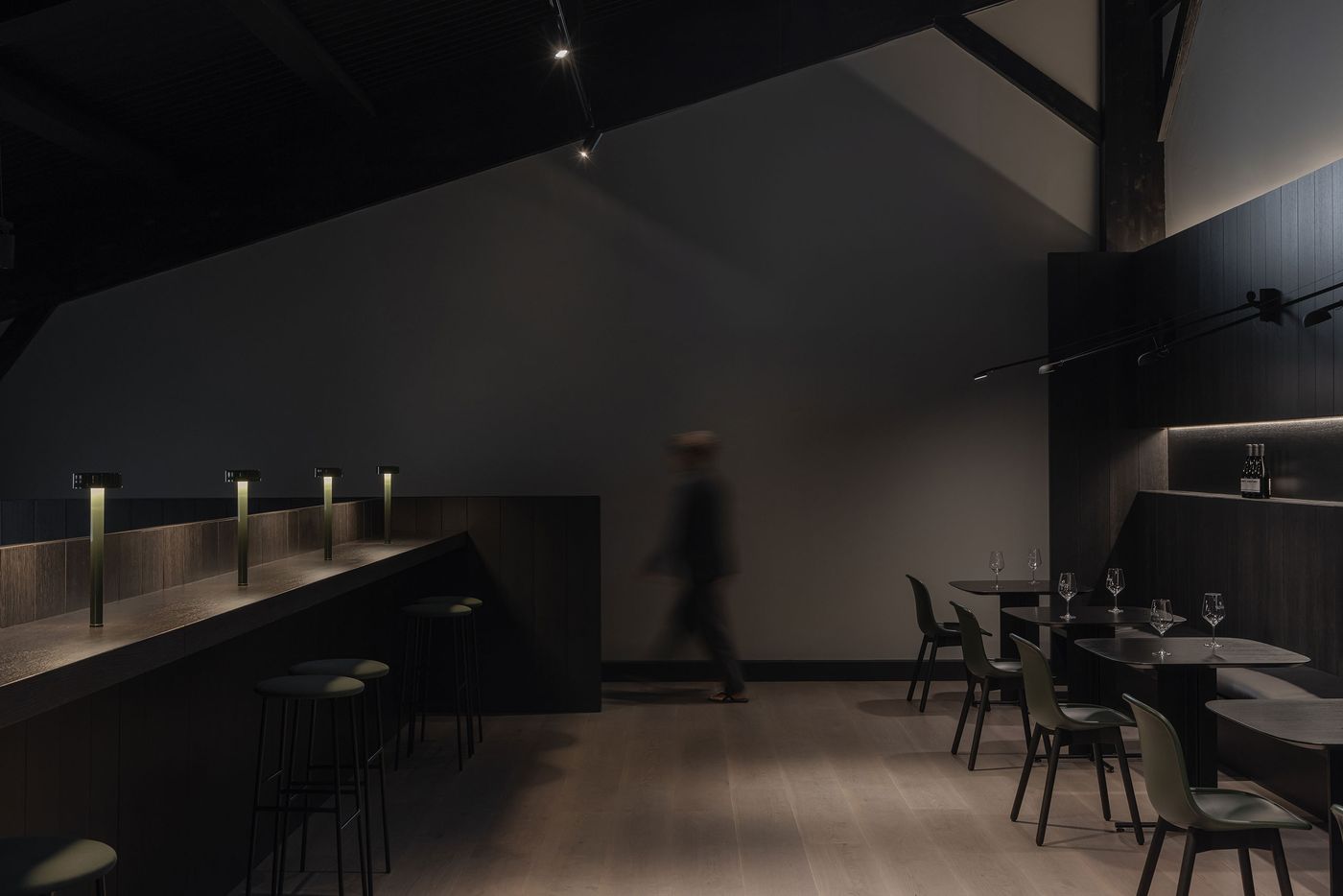
Photography by Javier Márquez.
In its redesign of Tritium Winery, Francesc Rifé Studio has achieved a careful balance: preserving the historical character of the site while introducing contemporary elements that are both restrained and purposeful. The result is a space that respects the past, accommodates the present, while remaining adaptable to the ever-evolving identity of the winery itself.

Photography by Javier Márquez.
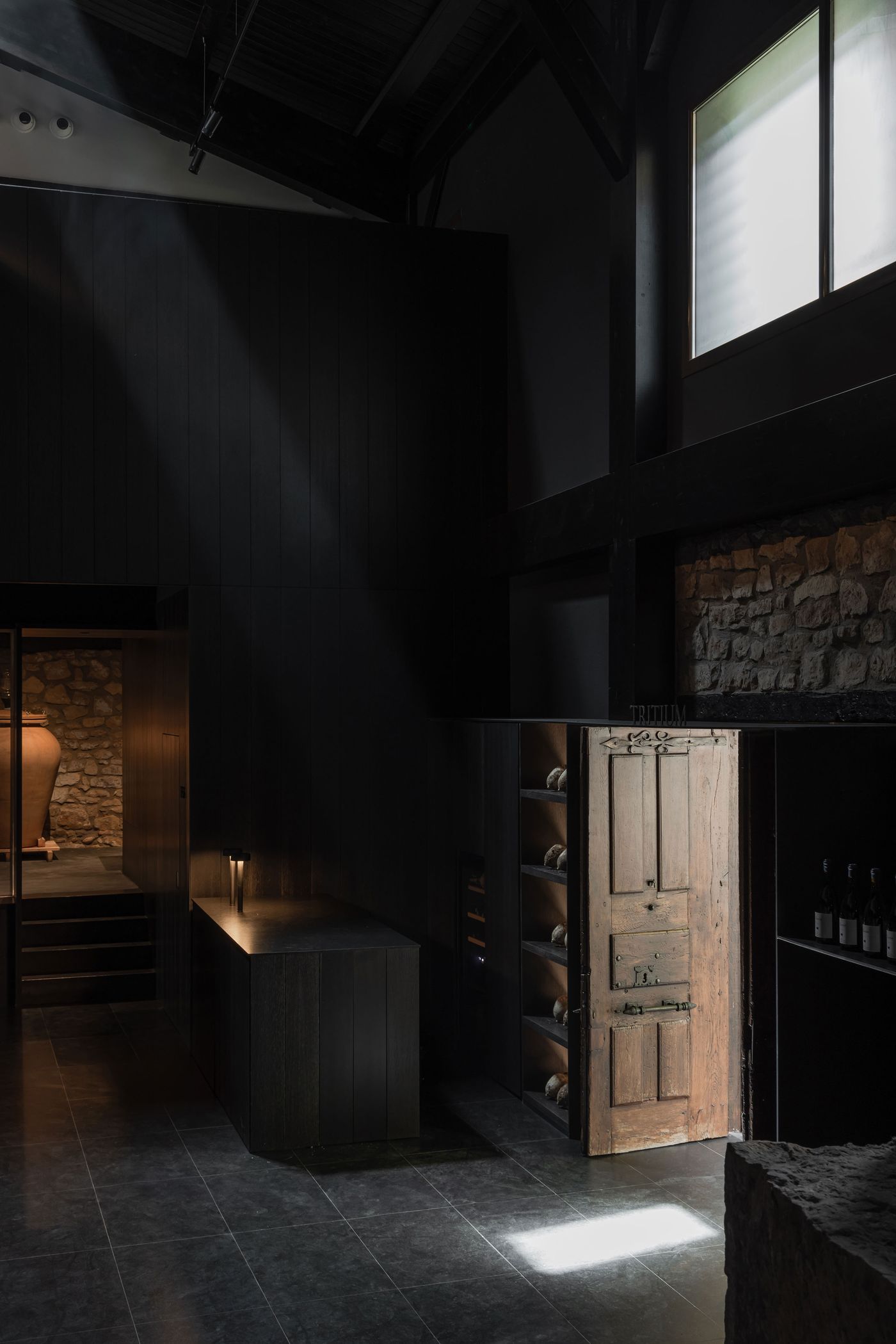
Photography by Javier Márquez.
